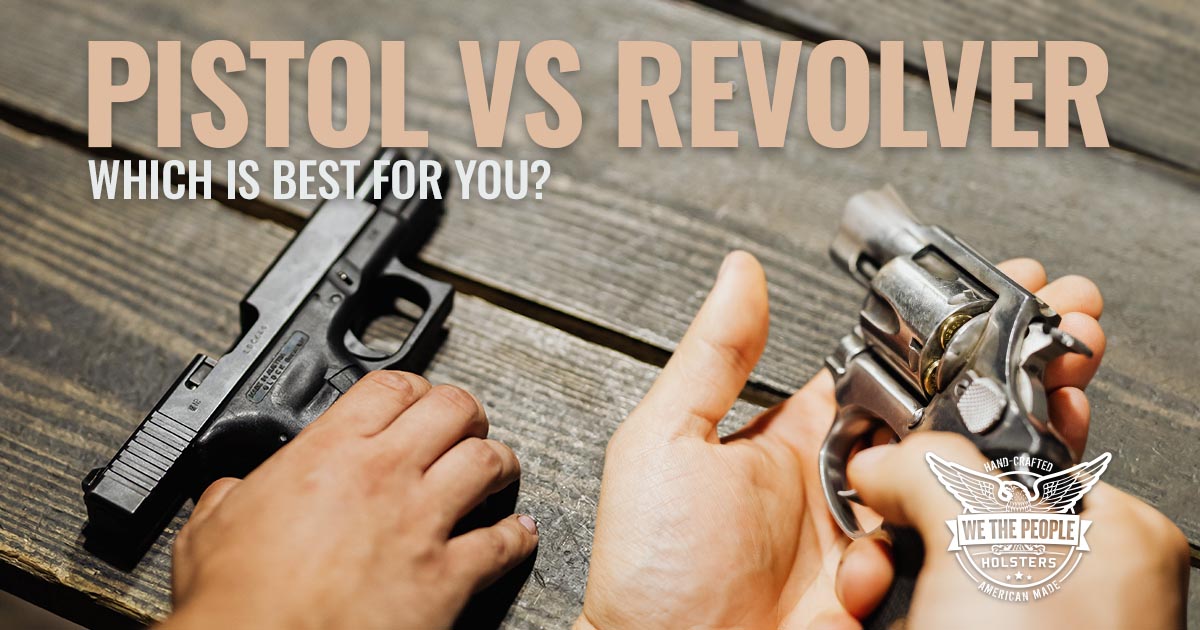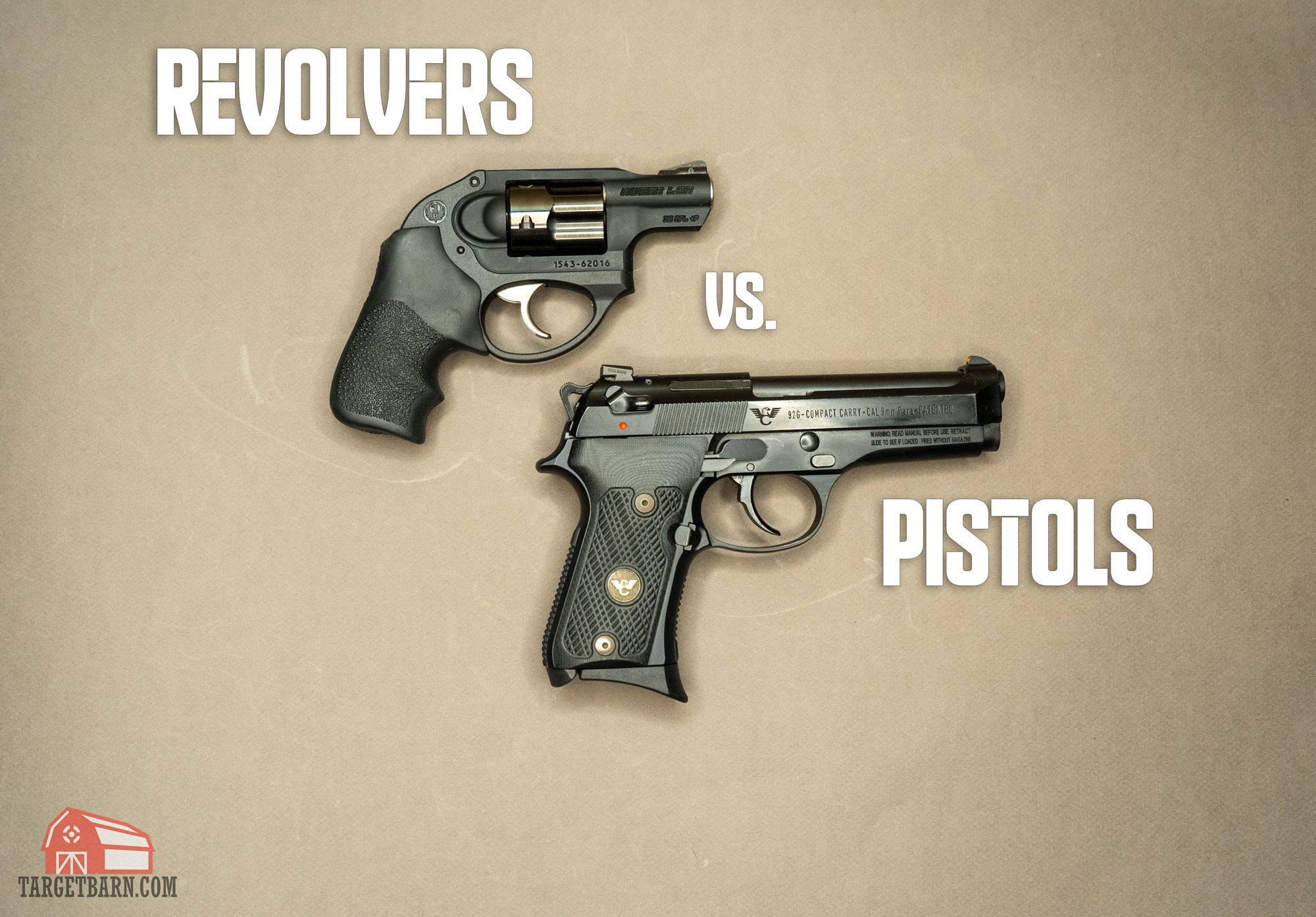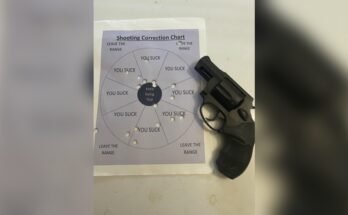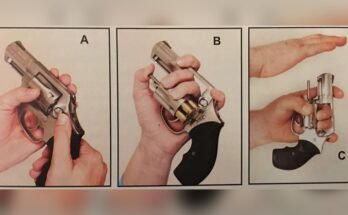Are you curious about what sets a revolver apart from a pistol? Whether you’re new to firearms or just want to understand the basics better, knowing the difference can help you make smarter choices.
These two types of handguns might look similar at first, but they work in very different ways. By the end of this article, you’ll see why that matters for safety, performance, and even your own comfort. Keep reading to discover the key differences that could change how you think about handguns forever.
Basic Design
The basic design of a revolver and a pistol sets them apart clearly. Both are handguns but they work differently. Understanding their structure helps in knowing how each functions.
Revolver Structure
A revolver has a rotating cylinder. This cylinder holds multiple bullets, usually five or six. Each time you pull the trigger, the cylinder spins. It lines up the next bullet with the barrel. The barrel is fixed and does not move. The hammer strikes the bullet to fire it. The frame is often bulkier to hold the cylinder. Revolvers are simple and reliable by design.
Pistol Structure
A pistol uses a single chamber and a magazine. The magazine is inside the grip and holds many bullets. When you fire, a bullet moves from the magazine to the chamber. The slide moves backward and forward to reload. The barrel is fixed or moves slightly with the slide. Pistols often have a slimmer design than revolvers. Their mechanism allows faster shooting and reloading.
Ammunition And Capacity
Ammunition and capacity are key factors that set revolvers and pistols apart. Both use bullets, but they hold and feed them differently. This affects how many shots you can fire before reloading.
Revolver Cylinder
A revolver uses a rotating cylinder to hold bullets. This cylinder usually holds 5 to 8 rounds. Each time you pull the trigger, the cylinder turns to line up the next bullet. The capacity is fixed, meaning you cannot add more rounds without changing the cylinder.
The cylinder design makes revolvers simple and reliable. Reloading can be slower because you load bullets one by one or use a speed loader. The cylinder also limits the total ammo you carry at once.
Pistol Magazine
Pistols use a detachable magazine to hold bullets. Magazines can carry 7 to 17 rounds, depending on the pistol size. The magazine fits inside the pistol grip and feeds bullets into the chamber automatically.
This design allows faster reloads. You can swap magazines quickly to continue shooting. Higher capacity magazines mean pistols often hold more bullets than revolvers. This makes pistols popular for self-defense and law enforcement.
Firing Mechanism
The firing mechanism is the heart of any firearm. It controls how the gun shoots bullets. Understanding this helps to know the difference between a revolver and a pistol. Both have unique ways to fire, which affects their use and handling.
Revolver Action Types
Revolvers use a rotating cylinder to hold bullets. When you pull the trigger, the cylinder turns. It lines up the next bullet with the barrel. There are two main types of actions in revolvers.
Single-action revolvers need you to cock the hammer before each shot. Cocking the hammer rotates the cylinder. Then, pulling the trigger fires the bullet. Double-action revolvers do both steps with one trigger pull. The trigger cocks the hammer and fires the bullet at once.
Pistol Action Types
Pistols use a magazine to hold bullets. They fire by using the slide and recoil to load the next bullet. Pistols also have two main action types.
Single-action pistols need the hammer cocked before shooting. The trigger only releases the hammer. Double-action pistols can cock and release the hammer with one trigger pull. Some pistols combine both in a double-action/single-action system. The first shot is double-action, and the next shots are single-action.
Reloading Process
The reloading process is an important part of using any firearm. It determines how fast you can get back to shooting. Revolvers and pistols have different ways to reload. This difference can affect your speed and ease of use. Understanding these methods helps you handle each type better.
Reloading A Revolver
To reload a revolver, you first open the cylinder. The cylinder swings out to the side. Then, you push out the spent cartridges using the ejector rod. After clearing the empty cases, you load new cartridges into each chamber. Close the cylinder firmly to lock it in place. This process takes a bit more time than with a pistol. It requires careful handling to avoid misalignment.
Reloading A Pistol
Reloading a pistol is faster and simpler. You press the magazine release button to drop the empty magazine. Then, insert a fully loaded magazine into the pistol grip. Push it until it clicks securely. Finally, pull back the slide to chamber a new round. This step readies the pistol to fire immediately. The design allows quicker reloads during shooting.
Size And Weight
Size and weight play important roles in choosing between a revolver and a pistol. These factors affect how easy the gun is to carry and handle. Both types have unique designs that change their size and weight.
Size Differences Between Revolvers And Pistols
Revolvers often have a bulkier frame. This is because they need space for a rotating cylinder. The cylinder holds multiple rounds, making revolvers wider. Pistols use a single magazine inside the grip. This allows pistols to have slimmer profiles.
Barrel length can vary in both guns. Revolvers usually have longer barrels for better accuracy. Pistols come in many sizes, from compact to full-size. Compact pistols are easier to carry and hide.
Weight Comparison Of Revolvers And Pistols
Revolvers generally weigh more than pistols. The metal cylinder and solid frame add extra weight. Pistols use lighter materials like polymer in their frames. This reduces overall weight and improves comfort.
Heavier guns can feel steady when firing. Lighter guns are easier to carry daily. Some people prefer revolvers for the weight and balance. Others choose pistols for their lightness and speed.

Accuracy And Range
Accuracy and range are key factors when choosing between a revolver and a pistol. These features affect how well the shooter can hit the target. They also influence the distance the bullet can travel effectively. Understanding these differences helps in picking the right firearm for your needs.
Accuracy Of Revolvers
Revolvers often have a simpler design, which can help with accuracy. The barrel is fixed to the frame, providing a stable shooting platform. This stability can lead to consistent shot placement. The trigger pull on many revolvers is heavier, which may affect precision. Still, with practice, shooters can achieve good accuracy.
Accuracy Of Pistols
Pistols usually have a lighter trigger pull, helping shooters fire smoothly. Their design allows for a longer barrel in some models, which can improve accuracy. Pistols also have sights that can be easier to adjust. These factors often make pistols more accurate at longer distances.
Range Differences
The effective range depends on the firearm’s barrel length and ammunition. Revolvers tend to have shorter barrels, limiting their range slightly. Pistols can have longer barrels, which helps bullets travel farther. Both are best used at close to medium distances. For long-range shooting, other firearm types are preferred.
Maintenance Needs
Maintenance is a key factor in keeping firearms safe and functional. Revolvers and pistols have different designs, which affect how you clean and care for them. Understanding these differences helps you maintain your firearm properly and extend its life.
Cleaning Process
Revolvers have fewer small parts to clean. The cylinder and barrel need regular attention. Wiping the frame and checking the moving parts is important. Pistols require more detailed cleaning. You must clean the slide, barrel, and magazine well. The trigger mechanism in pistols needs careful care.
Frequency Of Maintenance
Revolvers often need less frequent cleaning. Their simple design resists dirt buildup. Pistols need cleaning after every few hundred rounds. The slide action can trap more residue. Regular maintenance prevents jams and malfunctions.
Tools And Supplies Needed
Both firearms need basic cleaning kits. Brushes, patches, and lubricants are essential. Pistols may require extra tools for the slide. Revolvers need tools to clean the cylinder chambers. Proper lubrication keeps parts moving smoothly.
Common Maintenance Challenges
Revolvers can develop fouling in the cylinder gaps. This requires careful cleaning to avoid damage. Pistols face wear in the slide rails and recoil spring. Dirt can cause feeding or ejection problems. Regular inspection helps catch issues early.

Common Uses
Both revolvers and pistols have unique uses based on their design and features. Understanding these uses helps you see why people choose one over the other. Each type fits different needs and situations.
Revolver Applications
Revolvers are popular for self-defense and home protection. They are easy to use and reliable in tough situations. Many people like revolvers because they rarely jam. This makes them a good choice for beginners. Revolvers also work well in outdoor activities like hunting small game. Law enforcement officers once used revolvers as their main weapon. Collectors value revolvers for their classic design and history.
Pistol Applications
Pistols are common in law enforcement and military use today. They hold more bullets than revolvers, so users reload less often. Pistols are lighter and easier to carry. They fit well for concealed carry and personal defense. Many sport shooters prefer pistols for target practice. Pistols also offer faster shooting with less recoil. Their modern design suits competitive shooting and tactical needs.
Safety Features
Safety is a key concern when handling any firearm. Revolvers and pistols have different safety features. These features help prevent accidental firing and keep the user safe.
Understanding these differences is important for anyone interested in guns. Let’s explore how each type protects its user.
Revolver Safety Features
Most revolvers rely on a heavy trigger pull for safety. This means you must press hard to fire the gun. This reduces accidental shots.
Many revolvers have a hammer block or transfer bar safety. These parts stop the hammer from hitting the firing pin unless the trigger is pulled.
There is usually no external safety switch on revolvers. The design itself acts as a safety measure.
Pistol Safety Features
Pistols often have multiple safety mechanisms. One common safety is the manual thumb safety. This switch stops the gun from firing when engaged.
Some pistols have grip safeties. The gun fires only when held correctly, pressing the grip safety.
Trigger safeties are also common. These prevent the trigger from moving unless pressed properly.
Modern pistols may include drop safeties. This stops the gun from firing if dropped.

Frequently Asked Questions
What Is The Main Difference Between Revolvers And Pistols?
Revolvers use a rotating cylinder to hold bullets, while pistols have a single fixed magazine. Pistols typically allow faster reloading and higher ammo capacity. Revolvers are simpler and more reliable but slower to reload. This difference impacts handling, shooting speed, and maintenance.
Which Is Easier To Use, A Revolver Or A Pistol?
Revolvers are generally easier for beginners due to simple mechanics and fewer malfunctions. Pistols require more practice to operate safely, including managing magazines and safeties. However, pistols offer faster shooting and reloading once mastered. Choice depends on user experience and purpose.
Are Pistols More Accurate Than Revolvers?
Both revolvers and pistols can be accurate, but pistols often have better sights and ergonomics. Pistols benefit from consistent trigger pulls, aiding precision. Revolvers have a heavier trigger pull, which might reduce accuracy for some shooters. Accuracy depends largely on shooter skill and firearm quality.
Which Firearm Is Better For Self-defense, Revolver Or Pistol?
Pistols are favored for self-defense due to higher ammo capacity and quicker reloads. Revolvers are reliable and simple, making them suitable for those preferring ease of use. Both are effective, but pistols provide tactical advantages in high-stress situations.
Conclusion
Revolvers and pistols serve similar purposes but work differently. Revolvers hold bullets in a rotating cylinder. Pistols store bullets in a magazine inside the grip. Revolvers are often simpler to use and clean. Pistols usually offer more bullets and faster reloading.
Knowing these differences helps you choose what fits best. Each type has its own strengths and weaknesses. Think about your needs and preferences carefully. Understanding these basics makes you a smarter firearm user.



